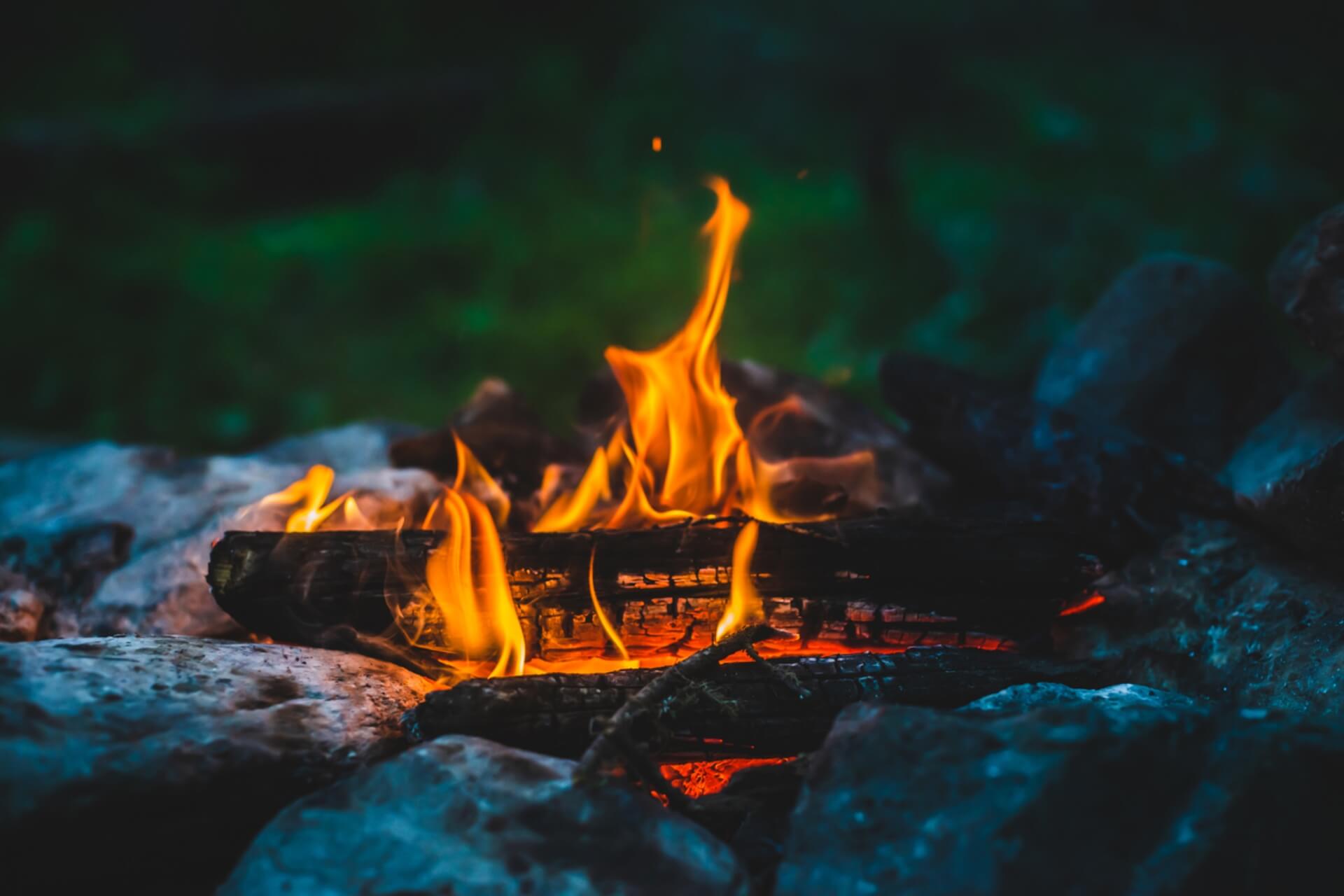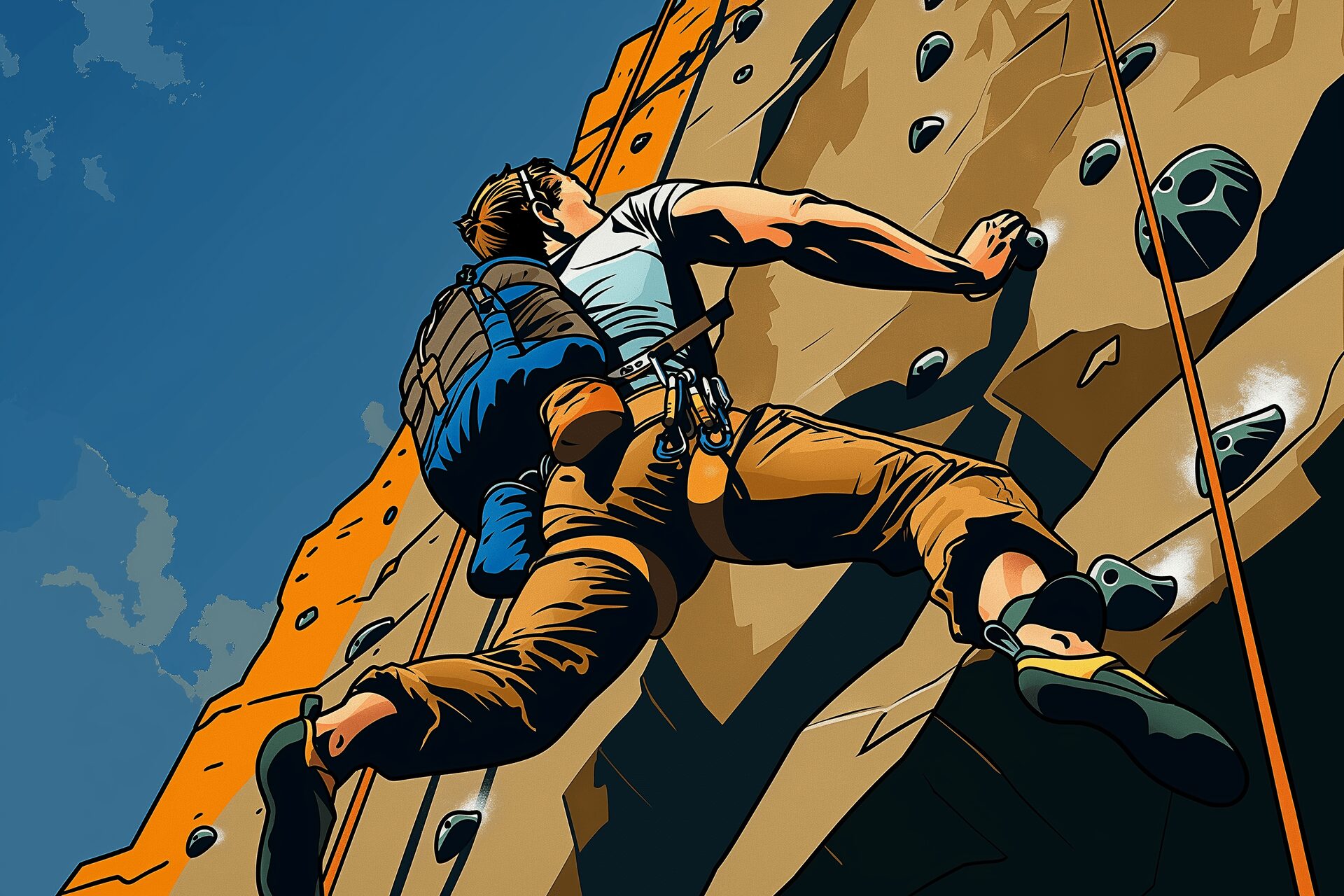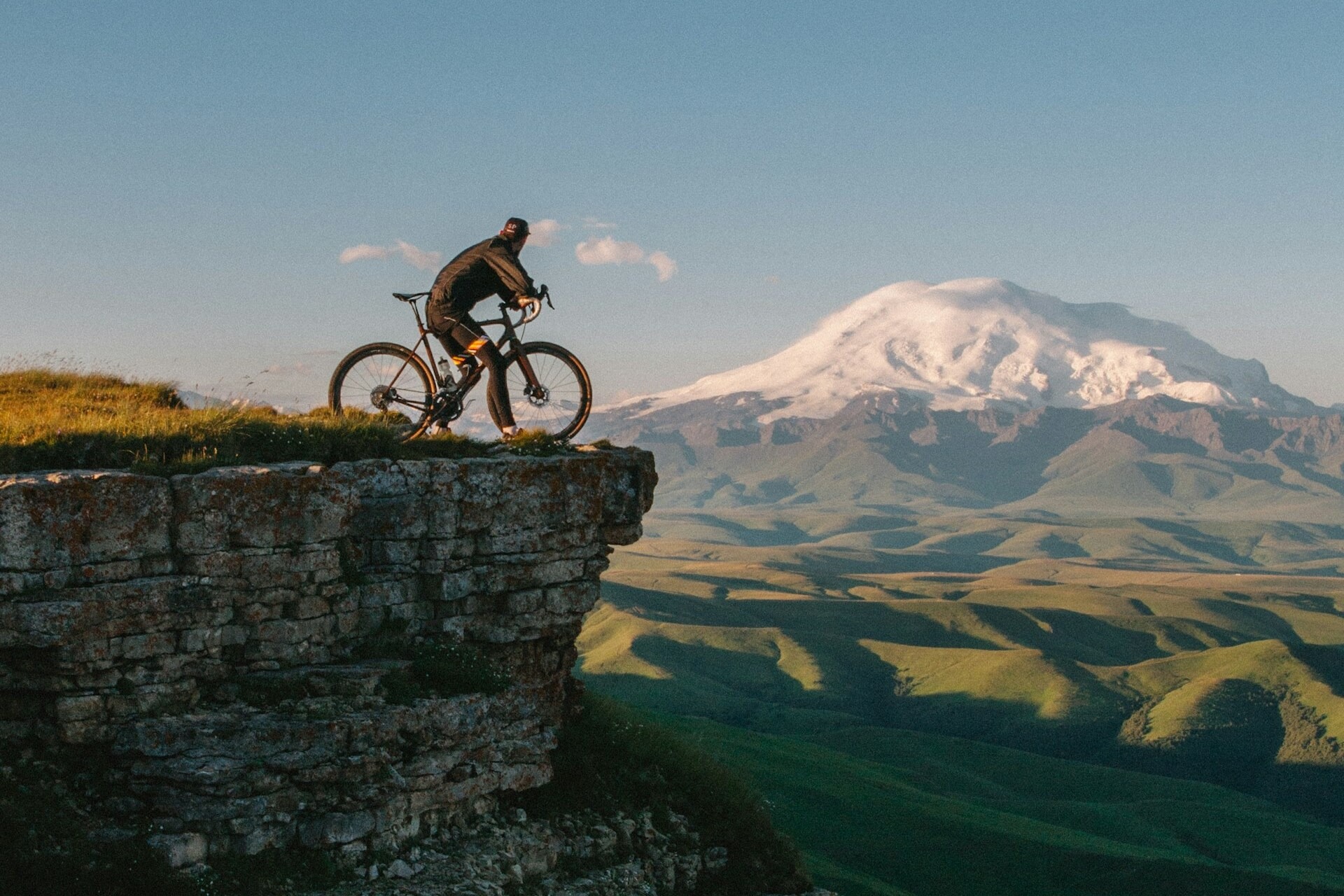
As an Amazon Associate, Modded gets commissions for purchases made through links in this post.
You tried to keep your matches dry, but they ended up soggy despite your efforts. Worse, your trusty Bic bit the dust. Now you are starring in an episode of “Man Versus Wild.” Will you prevail and enjoy the rest of your camping trip in warmth and relative comfort or tuck your tail between your legs and drive home? Hopefully, you choose the first option, especially if you have the right supplies. You can get a blaze going without a lighter. Here are eight ways to build a campfire without matches.
1. The Trusty Flint
Striking a piece of metal against a flint is one of the oldest methods of building a campfire without matches, and it isn’t too hard to get the knack. It’s how most lighters function, although you won’t benefit from a mechanical wheel to ignite the spark. However, you may be lucky if you have a paracord bracelet — many of them contain a steel and flint fire-starting clasp. Strike the two together at the right angle, and you’re golden.
Of course, you need a bit more than a spark to keep comfy. To use this method, amass the following materials:
- A flint
- Steel
- Some char cloth
- Tinder (not the app)
Hold your char cloth as you strike the steel with the flint as if trying to shave it. When you get a red spark, let it spread for a moment or two before folding the cloth and placing it on your nest of tinder, generally a pile of dried twigs and leaves. Place some more tinder on top and blow until the flames spread.
If you don’t have char cloth, you can try striking the spark directly onto the tinder. It takes more skill to get it going this way, but you can build a sizable blaze with patience.
2. Use Your Glasses
Hopefully, you weren’t the cruel bully child who got their kicks incinerating ants with a magnifying glass. However, you know glass can start a fire if you direct sunlight through it.
You’re in luck if you wear specs — remember poor Piggy from “The Lord of the Flies?” However, you’ll have to use this method while the sun remains in the sky. Therefore, set up camp early if you get wet.
All you have to do is create a tinder pile. Then, direct the light through your glasses until the leaves and branches begin smoking. A few breaths of air and some more refraction will have you a blaze in a short time. It’s one of the most challenging ways to build a campfire, but it can help you in tough situations.
3. Bottles and Cans, Clap Your Hands
What if you have 20/20 vision? If you have a glass bottle, you can use it for the same purpose. You may have to break the bottle to get the refraction angle just right — take off your shirt and use it to hold broken pieces to avoid cuts.
Fortunately, soda cans also work in a pinch, but you need to shine them first. Your best bet is a piece of chocolate. Shine up the bottom, indented part of the can to transform it into a mirror and let the sun do its thing.
Pro-tip: Please do not eat the chocolate afterward. It may contain traces of toxins from the aluminum.
4. The Hand Drill
The hand drill is a primitive fire-starting tool used by ancient cultures. It’s also pretty labor-intensive and goes better with two people — one can take over when the other tires, maintaining constant pressure.
You’ll need a drill and a fire board to use this method. Here’s how to prepare each:
- The drill: Find a dead, dried plant stalk and file away the rough edges on the sides to avoid splinters. It should be between one and two feet high and about half an inch in diameter. Round each end by sanding or carving and start with the thicker end once your entire kit is ready to go.
- The board: You’ll need a dead, dry branch to drill holes. Create a series of pilot holes, then place your drill within. Spin it with enough pressure to enlarge it, then carve a notch at a 45-degree angle.
Once you have your equipment, place tinder under your fireboard. Kneel on it and begin pushing down on the drill while spinning it quickly to create friction.
You’ll notice that your hands move downward as you spin. When you reach the bottom, stabilize your drill with one hand while you move the other back to the top. Here’s where it helps to have two people maintain constant pressure — when one person reaches the bottom, the other begins at the top.
Is it hard to start a fire this way? Heck, yes. However, you might be able to pull it off in a pinch, and it beats sitting in the cold and damp and feeling miserable.
5. Add a Bow
You can increase your power with your hand drill by adding a bow. To do so, you’ll need a piece of curved wood to serve as the bow and some string material. Here’s where that paracord bracelet comes in handy again, although you can use plant material if you can find or make strong enough stuff that won’t break under the friction.
Wrap your bow around your spindle, attaching it to one end of the bow first, wrapping it once around the spindle and then tethering it to the bow’s other end. From there, you follow essentially the same process as the hand drill, except you use the bow to keep the spindle moving. This method makes it slightly easier to start a fire solo, although it’s still quite the survivor challenge.
6. Or Plow It
Spinning isn’t the only way to create friction. You can also rub, and many people consider this method slightly easier.
You’ll need two pieces of wood as in the drill method and a tinder pile. Place the tinder at the base of the bottom piece of wood, holding it at a 45-degree angle. Take the top portion and begin plowing, trying to create a groove in the bottom board. When you eventually get some smoke and a start, nurture the tinder with your breath.
7. Battery and Steel Wool
It’s fairly unlikely that you’ll have these materials in the wild. However, you might. Some gadgets use 9-volt batteries to run, and certain clothing has sufficient metal you can try in a pinch.
However, this method is fairly easy with the right materials and fun to try at home — although you should supervise the kiddos. All you have to do is rub the battery connectors against the steel wool until you get a spark.
Incidentally, this trick also explains why you shouldn’t keep dead 9-volt batteries lying around in a drawer waiting to recycle them. If the right ends meet up and there’s enough juice, sparks will fly.
8. Chemistry Fun
It’s even less likely you’ll just happen to have the right chemicals with you to start a fire. Still, it pays to know this trick. Here are four ways to build a campfire without matches using the magic you learned back in 10th-grade Advanced Chem:
- Potassium permanganate and glycerin: Adding water acts as a catalyst, getting you faster flames.
- Ammonia nitrate, zinc and hydrochloric acid: Put the first two materials on a paper towel and carefully add the acid.
- Sodium chlorate, sugar and sulfuric acid: Mix the first two ingredients, then gradually stir in the sulfuric acid.
- Sulfuric acid, potassium permanganate and acetone: Soak a tissue in acetone. Then, mix the other two ingredients until crystals form and strain the remaining acid, igniting the tissue.
Ways to Build a Campfire Without Matches
Fire was once essential to human survival. It may become one again if you find yourself stranded in the wild with a damp set of matches.
Fortunately, you now know eight ways to build a campfire without matches. Once you develop your roaring blaze, you’re ready to brave a night in the wilderness.
Stay up to date with the latest by subscribing to Modded Minute.
Author
Jack Shaw is a senior writer at Modded. Jack is an avid enthusiast for keeping up with personal health and enjoying nature. He has over five years of experience writing in the men's lifestyle niche, and has written extensively on topics of fitness, exploring the outdoors and men's interests. His writings have been featured in SportsEd TV, Love Inc., and Offroad Xtreme among many more publications.






